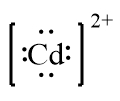Lewis dot symbols, also known as electron dot diagrams, are visual representations that illustrate the valence electrons of an atom or ion. Understanding valence electrons is crucial for predicting how atoms will bond and interact in chemical reactions.
For main group elements, which are found in groups 1A to 8A of the periodic table, the number of valence electrons corresponds directly to the group number. For instance, aluminum, located in group 3A, possesses three valence electrons. This straightforward relationship allows for easy identification of valence electrons in main group elements.
In contrast, transition metals exhibit a more complex scenario. The number of valence electrons for these elements is determined by the sum of their s and d electrons. This means that when analyzing a transition metal, one must consider both the outermost s orbital and the d orbitals to accurately count the valence electrons.
In summary, when determining the number of valence electrons for an element, it is essential to first classify it as either a main group element or a transition metal, as this classification dictates the method of calculation.














